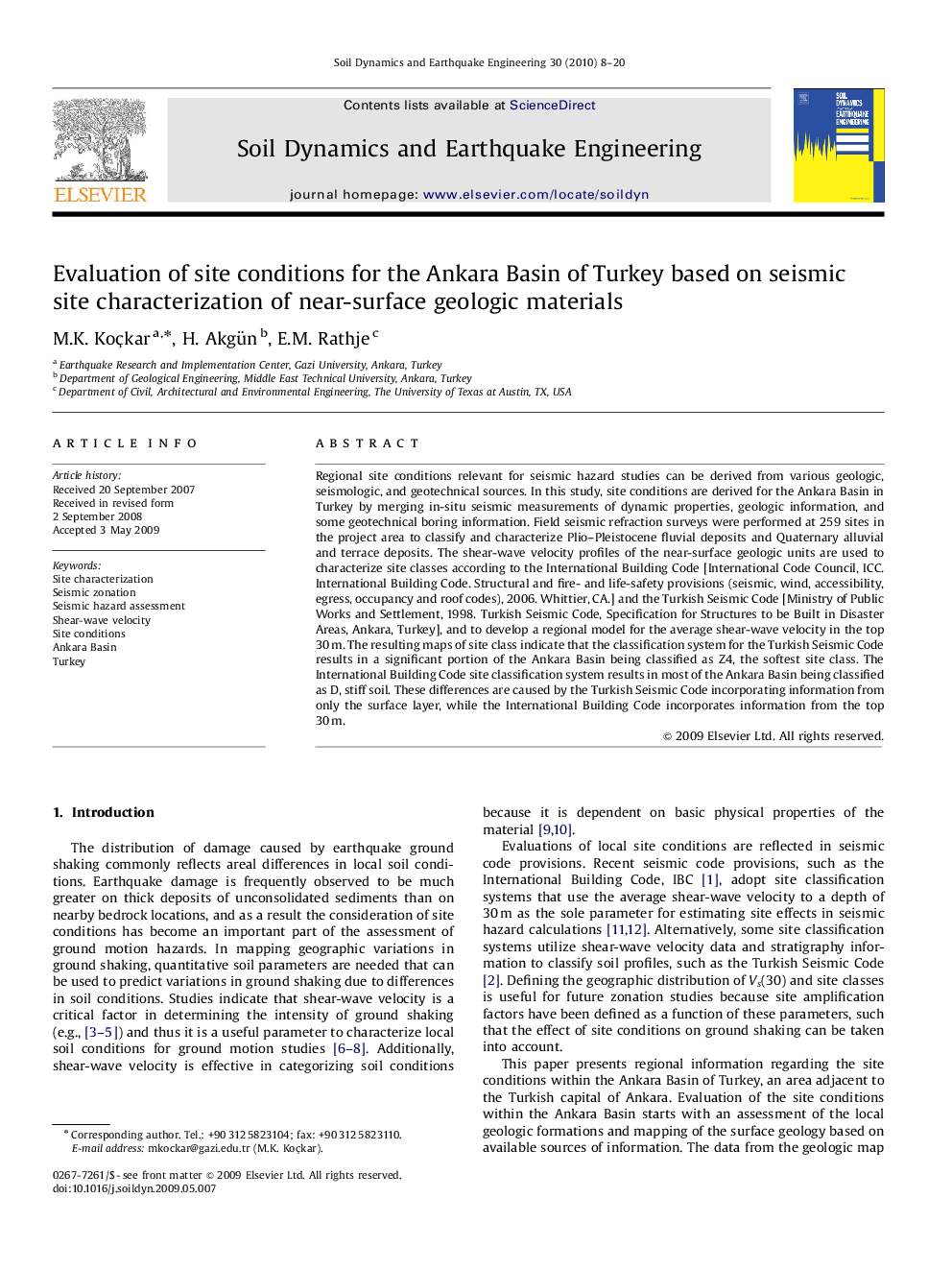| Article ID | Journal | Published Year | Pages | File Type |
|---|---|---|---|---|
| 304813 | Soil Dynamics and Earthquake Engineering | 2010 | 13 Pages |
Regional site conditions relevant for seismic hazard studies can be derived from various geologic, seismologic, and geotechnical sources. In this study, site conditions are derived for the Ankara Basin in Turkey by merging in-situ seismic measurements of dynamic properties, geologic information, and some geotechnical boring information. Field seismic refraction surveys were performed at 259 sites in the project area to classify and characterize Plio–Pleistocene fluvial deposits and Quaternary alluvial and terrace deposits. The shear-wave velocity profiles of the near-surface geologic units are used to characterize site classes according to the International Building Code [International Code Council, ICC. International Building Code. Structural and fire- and life-safety provisions (seismic, wind, accessibility, egress, occupancy and roof codes), 2006. Whittier, CA.] and the Turkish Seismic Code [Ministry of Public Works and Settlement, 1998. Turkish Seismic Code, Specification for Structures to be Built in Disaster Areas, Ankara, Turkey], and to develop a regional model for the average shear-wave velocity in the top 30 m. The resulting maps of site class indicate that the classification system for the Turkish Seismic Code results in a significant portion of the Ankara Basin being classified as Z4, the softest site class. The International Building Code site classification system results in most of the Ankara Basin being classified as D, stiff soil. These differences are caused by the Turkish Seismic Code incorporating information from only the surface layer, while the International Building Code incorporates information from the top 30 m.
